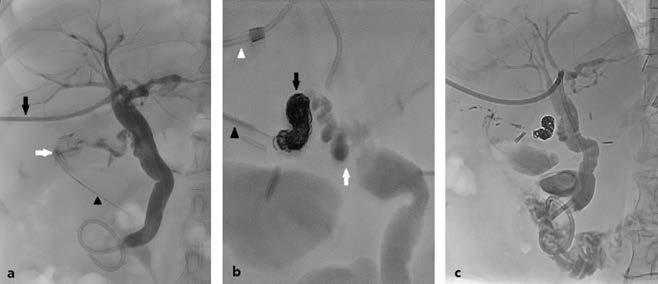Treatment of Persistent Bile Leak at the Cholecystectomy Stump Using Coil and Glue: A Case Report
DOI:
https://doi.org/10.3941/jrcr.5756Abstract
Persistent bile leak after cholecystectomy is a challenging complication, especially when endoscopic management is not feasible due to altered anatomy. We report a 73-year-old female with prior total gastrectomy who developed bile leakage following laparoscopic partial cholecystectomy. Bile leakage was confirmed on contrast-enhanced computed tomography and percutaneous transhepatic cholangiography. After two weeks of unsuccessful biliary drainage, transcatheter embolization was performed. Direct fluoroscopy-guided percutaneous access to the cystic duct stump was achieved, and embolization using detachable coils, autologous blood, and n-butyl-2-cyanoacrylate with Lipiodol was successful. Follow-up cholangiography showed complete resolution without complications. This case highlights transcatheter embolization as an effective and minimally invasive treatment option for persistent bile leaks when standard approaches are not applicable.

Downloads
Published
Issue
Section
License
Copyright (c) 2025 Journal of Radiology Case Reports

This work is licensed under a Creative Commons Attribution-NonCommercial-NoDerivatives 4.0 International License.
The publisher holds the copyright to the published articles and contents. However, the articles in this journal are open-access articles distributed under the terms of the Creative Commons Attribution-NonCommercial-NoDerivs 4.0 License, which permits reproduction and distribution, provided the original work is properly cited. The publisher and author have the right to use the text, images and other multimedia contents from the submitted work for further usage in affiliated programs. Commercial use and derivative works are not permitted, unless explicitly allowed by the publisher.





